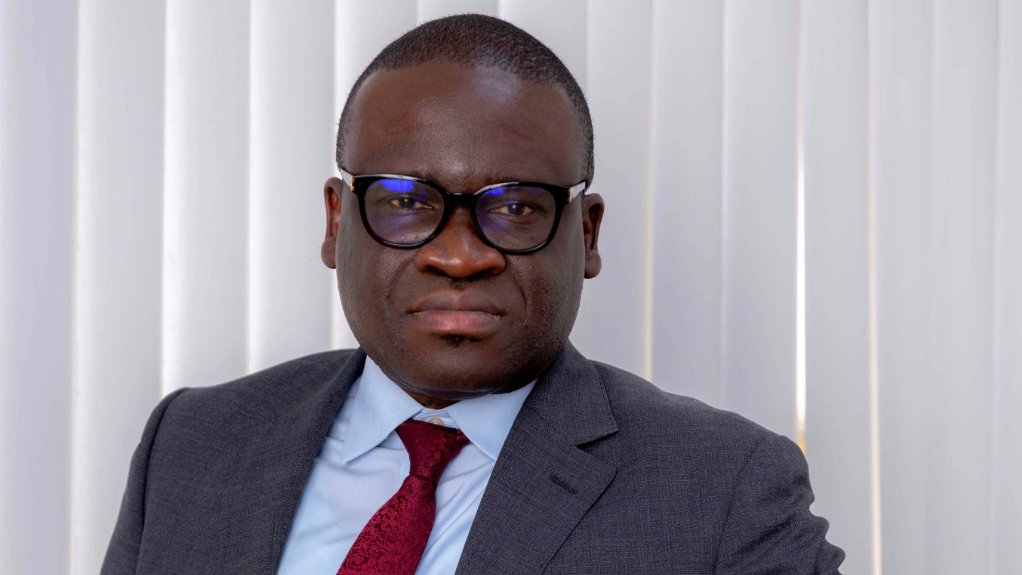
+27 (0)11 0461900
Private Bag X139 Halfway House 1685

West Africa - beyond traditional energy
By: Ajibola Akindele - Country President, Nigeria, Schneider Electric West Africa
It is a double-edged sword; West Africa is going through an exciting period of industrialisation but also continues to face traditional energy provision challenges. Fortunately, and this is good news indeed, countries like Nigeria are also seeing its energy landscape evolving, with alternative resources such as gas and microgrids offering more sustainable and efficient options.
According to geopolitical forecasts group GIS, Nigeria holds Africa’s largest gas reserves
and is the continent’s third-largest producer after Algeria and Egypt. Globally, the country’s reserves rank eighth (after Russia, Iran, Qatar, the U.S., Turkmenistan, Saudi Arabia and the UAE).
Furthermore, Nigeria’s gas reserves have been steadily increasing, as has production. Between 2000 and 2022, the country ramped up its gas production by an impressive 260 percent by adding nearly 30 billion cubic metres (bcm) of gas to its production.
The role of gas in industrial power generation
Therefore, tapping into natural gas resources has become central to Nigeria’s energy strategy. Large-scale gas power plants, typically ranging from 250 to 500 megawatts (MW) play an all-important role in powering the country’s industries whilst also delivering electricity to the national grid.
However, due to ongoing transmission losses and power outages, the use of gas has also moved beyond centralised, large-scale generation to also include decentralised gas turbines and engines with capacities ranging from 2.5 to 35 MW.
These smaller units, many of which are mobile, offer flexible deployment and can be powered by compressed natural gas (CNG) or liquefied natural gas (LNG). Furthermore, the concept of a “virtual pipeline” enables gas to be transported via trucks rather than through traditional pipelines, making energy accessible in regions far from centralised infrastructure.
It is also this approach that is gaining traction across West Africa, where industries and communities are located at significant distances from central power stations. With mobile gas turbines and smaller-scale gas engines, energy can be generated closer to consumption points, reducing transmission losses and increasing reliability.
Microgrids offer decentralised, sustainable power
In addition to gas, microgrids are also an important and viable alternative to bolster decentralised energy generation in Nigeria and across West Africa. A well-established option, a microgrid is localised energy system that can operate independently or in tandem with the national grid, providing power to areas where the central grid is either unreliable or non-existent.
Microgrids are particularly well suited to rural and remote communities where extending the national grid is prohibitively expensive and slow. By using a mix of renewable energy sources such as solar, wind, and gas, microgrids reduce dependency on the central grid and offer a sustainable, cost-effective alternative.
Importantly, it offers resilience, allowing regions to maintain power even if the central grid fails.
The good news is technologies that form the backbone of microgrids, such as solar panels and battery storage, are also becoming more affordable, making it an attractive option for communities and industries alike.
And whilst the initial setup costs for microgrids may in some instances be higher than conventional power sources, its long-term operational costs are significantly lower. Once installed, solar and battery-powered microgrids require little maintenance and do not rely on fluctuating fuel prices, making it a more sustainable option over a 20-year period.
In Nigeria, where a substantial proportion of the population still lacks access to reliable electricity, microgrids are a key part of the solution, bringing power directly to homes, schools, hospitals, and businesses whilst transforming lives and boosting local economies.
Schneider electric’s role in West Africa’s energy transition
Schneider Electric plays a significant role this energy transformation across West Africa. We don’t manufacture gas turbines or solar panels; however, we do optimise its energy efficiency and sustainability through digital solutions.
Schneider Electric’s microgrid solutions, such as the Villaya Flex, are designed to power rural communities and villages with scalable energy systems that can expand as needed. These systems integrate renewable energy sources with battery storage, creating a sustainable energy solution that can operate independently of the national grid.
For larger applications, our EcoStruxure Microgrid Flex, a grid-tied solution, provides backup power and enhances the reliability of the national grid. By optimising energy flow, reducing downtime, and creating redundancies, Schneider Electric helps ensure a reliable and efficient power supply for industries and communities.
Lastly, with growing support from international development banks and multilateral agencies, the future of West Africa's energy sector looks brighter, cleaner, and more efficient than ever. By harnessing the power of gas and microgrids, countries across the region can unlock new opportunities for industrialisation and energy access, ultimately driving economic growth and improving the quality of life for millions.





